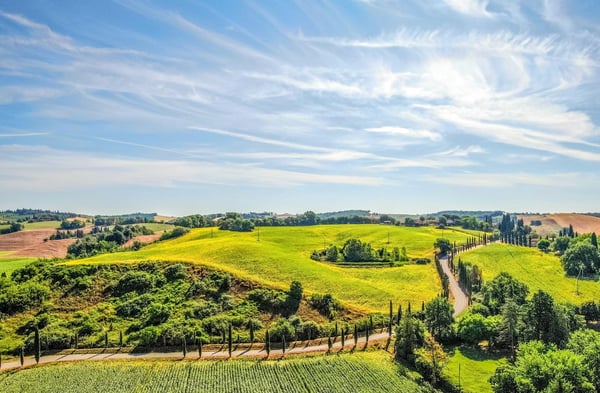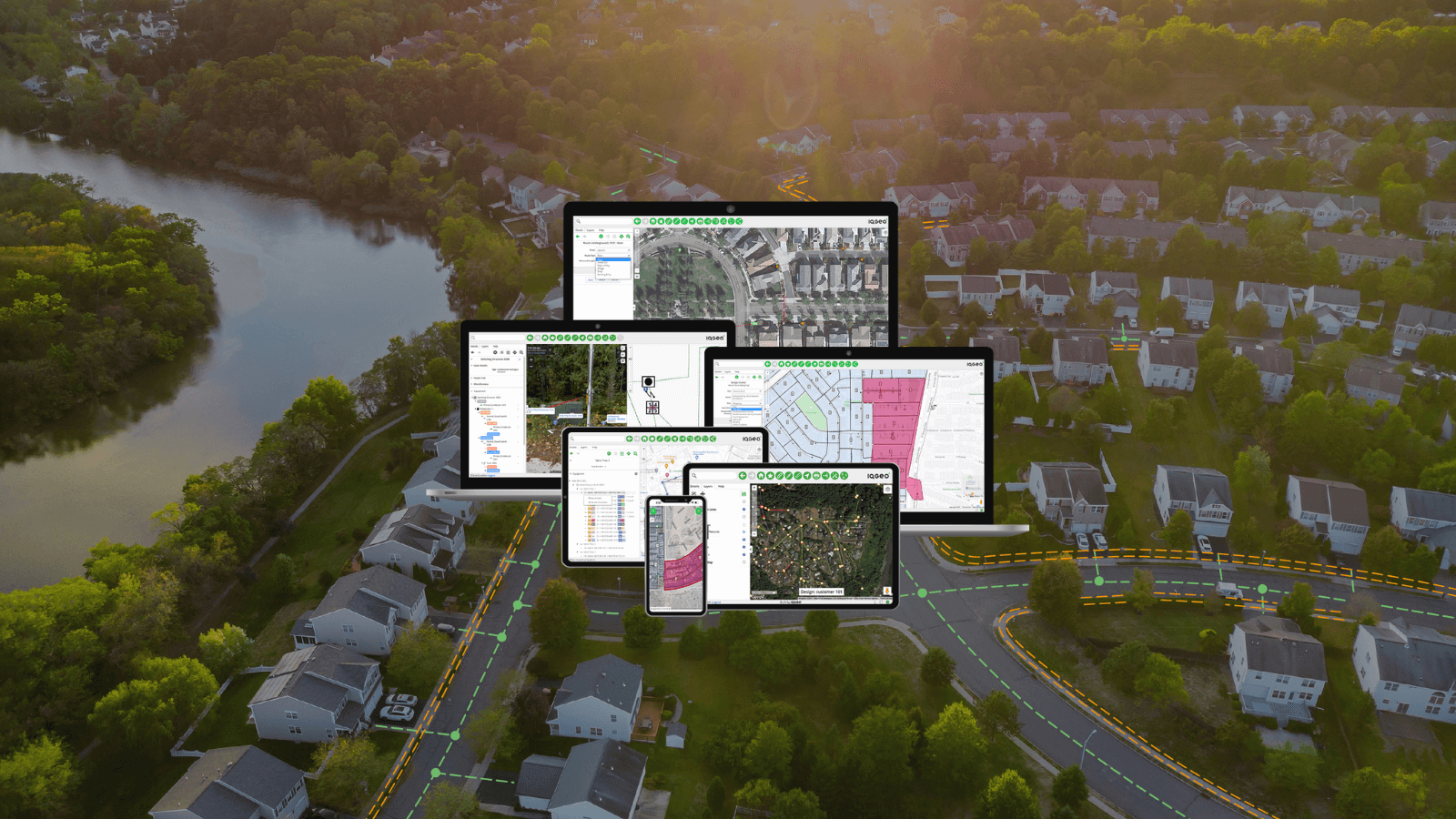Rural fiber rollouts are a massive challenge for Europe. Only 22% of households in rural areas have been passed, which leaves a huge number of households that still don’t have access to fiber. Fiber will soon be the basic standard for digital life, firstly because more than 50% of all households in Europe have been passed, and secondly, it provides a stable and fast internet connection.
There are two big issues that spring out when addressing this issue, firstly how to meet the E.U’s ambitious targets for rural fiber rollouts amidst a skills, labour, and material shortage. Secondly, how to start to address the digital divide between rural and urban areas particularly in a post-COVID world.
To tackle Fiber to the home (FTTH) rollout to rural areas the European Commission has implemented the “Gigabit Society 2025” and “Digital Compass 2030” initiatives, the first which aims to provide an internet connection of at least 100 Mbps to all European households by 2025, and the second aims to have all European households covered by a Gigabit network. A report from the FTTH Council of Europe, “FTTH-B in Rural Areas”, found that these targets will drive full-fibre connectivity growth in both urban and rural areas. But how each country achieves this goal is on them.

We can see that these rollouts aren’t uniform and are heavily dependent on government backing and funding. For instance, Germany only has 9% of their rural households passed compared to Spain, which has a 60.5% pass rate for rural households. The key to Spain’s success can be traced back to 2015 where Spain’s telecom regulatory body CNMC ruled that their telecoms giant, Telefonica, must open its fiber infrastructure to rivals in approximately three-quarters of the country. Vodafone and Orange, among other providers, began heavily investing in rural fiber rollouts. As a result, Spain has emerged as the frontrunner in terms of households reached in both rural and urban areas.
Another EU success story is in Ireland, where the government first identified the areas where they believed there wouldn’t be any commercial development – which of course was mainly rural areas. We worked with Eir to evaluate the commercial viability of their rural areas and discovered there were 300,000 homes to be passed in rural Ireland, making it one of the largest infrastructure projects in the country for a long time. The government has since set up a national broadband initiative to fund the fiber rollout across these areas.
Another mechanism to get government muscle behind rural fibre rollouts is to show that there will be a high adoption rate. This occurred in Lower Austria, a province that is very rural. State-owned infrastructure company nöGIG deployed fiber in this rural area on an open access model. The big thing about this is that adoption was extremely high, even before the rollout 50% of the homes had signaled their interest in adoption. This is different than deploying in urban areas where you have alternative technologies such as coax cable. Deployment may be more expensive, but with high adoption rates – a monopoly in fact – rural is an interesting case, simply because there is no alternative. In the case of nöGIG, they were so confident of their ROI, they only asked for a government loan rather than funding, because they truly believed in the commercial case.
We know deploying fiber in rural is expensive, due to longer distances between houses, but this also means that the opportunities for cost optimization are significant. There is room to optimize materials, architecture, splitter schemes, types of cables, there are cables with a lower attenuation per kilometer, which means you can go further with the same cable, these and other technological optimizations can help reduce costs in a rural deployment significantly. Not to forget that using automation tools also helps to get the design right the first time, so that time and money can be saved on the construction side. We have helped optimize those architectures using Comsof Fiber.
However, even if each country had all the regulatory backing and all the funds in place to get going immediately on their fiber rollouts, there is still the issue of a skills and labour shortage. The biggest challenge that we now face due to the acceleration of the fiber market, is ensuring supply can keep pace with the demand for materials and skilled labour. The latest report from the FTTH Council Europe noted that the availability of skilled labour to build out new fiber networks is beginning to be felt in late 2020. The growth of fiber which is expected in 2021 and 2022 will make the skills shortage more pronounced. Let’s talk about what this means concretely.
Construction is seen as a bottleneck for many rollout programs as there is a serious skills shortage. In the U.S there have been efforts to circumnavigate this problem, for example by employing pre-connected plug and play fiber solutions, something similar could also be implemented in Europe Obviously, investment needs to go into training a skilled labor force, which is a great opportunity for local economies, as I mentioned before, and these skills will be in high demand for many years to come. There is also a case for automation for the construction portion of the rollout. There are many companies that have tools on the market that help make deployment more efficient, and therefore make the best use of the skilled labor that’s available. But the skills shortage doesn’t just stop with construction.
There is also a shortage of skilled network designers across the globe. The profiles needed for these jobs are highly skilled, and very niche, it takes years before a designer can produce network plans that are high quality. It is possible to amass a team of more junior designers, but with the demand for high-quality designs, and fast, the risk of outputting lower quality designs rises which will ultimately create huge costs on the construction side as mistakes are inevitable. To keep the quality, highly skilled people are needed, but we simply don’t have enough designers in the industry to keep pace with the demand we’re seeing. So, it’s important to make efficient use of highly skilled people and support them with the right tools and use automation and strategic partners when necessary.
We’ll take our customer Proximus as an example. They needed a network design for 4.2 million homes across Belgium. It took their design team of 4 people, 1 year to create a complete fiber network design for 1 million homes. With their ambitions to accelerate the rollout, they utilized IQGeo's Comsof Fiber software and involved Yungo, an IQGeo partner, to help them produce more quality network designs in a short amount of time. The speed at which they produced a design is astonishing, but on top of this, they also kept their project within the bounds of their forecasted budget.
Let’s say there is a 100% successful FTTH rollout across all urban and rural areas, this still only addresses half of the problem when it comes to the digital divide.
We must also be prepared to look at the affordability of fiber and for the supply of connecting devices for all households and implement inclusive policies.
In Belgium, and I am sure other countries, we have already seen these issues arise with the first round of lockdowns for school children. The children were offered homeschooling via their devices, but it soon emerged that many children didn’t have access to a laptop or a connected device, so cities across Belgium began giving laptops to these children. If full civil participation is the goal, then each household not only needs fiber, but also needs to have access to affordable connections and devices that allow them access to the internet.
While the future is certainly bright for further rural fiber rollouts, there are still key challenges that need to be addressed, both for industry players and governing bodies. We must ensure that our labour force is trained and supported by every means possible, so that high-quality network designs are created, as the demand continues to rise. Governing bodies also must ensure that the promotion and investment into the infrastructure are implemented, and in particular take this opportunity to address the digital divide.
Visit our customer stories page to see why thousands of users choose IQGeo's fiber network management software to document and manage their fiber networks.
‘Article first published in Broadband Journal, quarterly publication from the SCTE ®, 2021’.

Marketing and Communications Manager at IQGeo
Similar articles:



 Previous
Previous







